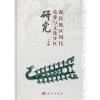
Wang Qin
Jinan: Shandong daxue chubanshe, 2002, 218 pages
Reviewed by Qiaowei Wei (PhD Candidate, Shandong University; HYI Visiting Fellow)
As the most important area for Chinese archaeological research, the Haidai region is not only related to the origins of state and civilization, but also constitutes the crucial periphery within the sociopolitical systems of both the Shang and Zhou Dynasties. The burials of the Zhou Dynasty (1050-221 BC) in this region provide a variety of evidence for historical archaeological research, such as issues concerning burial objects, burial rituals, chronology, as well as Zhou Dynasty center-periphery relations. Based on recent excavations and investigations in the Haidai region, Wang Qin discusses some problems with previous research, especially concerning the typology and dating of the burial objects, and suggests that the combination of the burial structure and burial objects would be a superior guide to chronological and cultural area divisions. Furthermore, in this book, Wang suggests that the Haidai region should be regarded as somewhat independent from the sociopolitical system of the Zhou Dynasty.
This book is based on the author’s Ph.D. dissertation. His research involved many years of archaeological excavation in the Haidai region, during which he collected a wealth of materials and data on the burials of the Zhou Dynasty. The framework of the book rests upon three lines of evidence related to these burials.
The first and most important one concerns the chronology of the burials. Since the previous research on chronology depended merely on variance in ceramic objects, this project suggests that a synthetic study should include both ceramic and bronze vessels so as to derive the sequence of burial objects. This was motivated by the problem of incomplete data sets and by the lack of previous samples on which to do carbon dating. On this basis, in accordance with the burial objects in both the Haidai region and other Zhou Dynasty burial sites, the chronology of burials can be divided into six mounds with nine periods.
Another contribution of this research is the division of cultural areas. The author clarifies the differences among burial objects by a typology of vessels, and divides the Haidai region into four interrelated cultural areas, that is, the northern, southern, southeastern, and Jiaodong (胶东) districts of Shandong. These comparisons demonstrate that each area had been adapted to a number of states, such as Qi (齐), Lu (鲁), Xue (薛), Jv (莒), and Lai (莱). Given the presence of burial objects, as well as a number of settlements excavated at the Haidai region, Wang proposes an outline for the distribution range of various cultural districts. The problem is that, given the limitations of the evidence at hand, it is hard to say whether the relationship between cultural districts was in the form of states or under the sociopolitical structure of the Zhou Dynasty.
The last issue discussed at length in this book is the interaction of the Haidai region and Zhouyuan area (周原), alternatively known as center-periphery relations. According to the historical literature, more than five states constituted the cultural region of the Haidai area. However, the archaeological materials from that region suggest that during the Early Western Zhou to Middle Western Zhou period, there were two main social groups found in the Haidai area, the “Yi” (夷) and the “Zhou” (周). From the Late Western Zhou period, the inhabitants of the “Zhou” were representative of different social groups, including Qi (齐), Lu (鲁), Xue (薛), Jv (莒), and Lai (莱). At the beginning of the Warring States Period, the Qi state was dominant over other cultural regions. Wang’s model has been gaining increasing support and features in discussions of burial ritual, particularly in regard to how people defined their social identity through burial practices.
